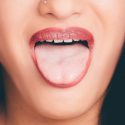Sensory Processing Disorder Brushing Teeth
Sensory Processing Disorder or SPD is a condition where the brain is unable to properly receive and process information received from various senses.
People with SPD tend to be overly sensitive to particular stimuli like touch, sound or certain tastes.
Many autistic children show symptoms of SPD. Some sounds, textures or tastes can easily overload their senses, causing them to scream, cry or act out.
Your child can also have SPD without being autistic. In fact, most kids (and adults) with sensory processing disorder are not autistic.
SPD can be a big problem when it comes to maintaining dental hygiene.
Kids with the condition will do anything – kick, scream, cry – to keep the toothbrush away from their mouth.
Causes of Sensory Processing Disorder When Brushing Teeth
Kids with SPD may have higher than usual oral sensitivity. They display what’s known as Oral Sensory Defensiveness.
They’ll kick, scream and bite to keep the toothbrush away from their mouth.
They might be dreading the feeling of bristles against their teeth and gums or it could be the taste of the toothpaste.
In some kids, the foam can also feel uncomfortable.
Your child may also have sensory issues beyond their mouth. They might be reacting to the bathroom environment; perhaps the colours or just the general feel.
Other kids react to brushing with cold water or the sound of brushing.
Dental Hygiene Tips for Parents of Kids with SPD
1. Start small and gently
If your child reacts defensively when they see a toothbrush, forget about it for now.
They may be more tolerating towards your finger. Apply a little toothpaste on your finger and massage their gums and teeth.
It’s not as effective as a toothbrush but it’s a start. As they get desensitized, it will be easier to introduce a toothbrush after some time.
Before you introduce a normal toothbrush, try one of those baby finger toothbrushes. It will be even easier to transition to a proper toothbrush.
2. Use a soft-bristled or silicon toothbrush
If your kid seems to find the bristles uncomfortable, try using a softer toothbrush that is gentle on their teeth and gums.
You can also try a silicon toothbrush. The silicone bristles are much softer and gentler than traditional nylon bristles.
3. Use a different toothpaste
Generally, kids and minty toothpastes don’t go well.
For kids with SPD or autism, the minty flavour can be especially overwhelming. It can feel like their mouth is burning.
Look for a child-friendly toothpaste with a flavour like strawberry, mango or bubble gum.
4. Brush with warm water
If your child is sensitive to cold water, giving them some warm water to brush with can help.
5. Change the environment
For kids who seem to be affected by the colour or feel of the bathroom, a change of location can be helpful.
Look for a space where they feel comfortable such as their bedroom or their favourite chair.
Sensory Processing Disorder in Teens and Adults
Oral-specific sensory processing disorder is not limited to children. Teens and adults can have it too.
They find the act of brushing to be really uncomfortable or hate the taste of toothpaste or the feel of foam in their mouth.
In some people, SPD can lead to gagging or feeling like vomiting when brushing.
Most of the tips above for kids also apply to adults: switch to a softer or silicon toothbrush, try a different flavour of toothpaste and see if warm water feels better.
Something else that can help is a toothpaste without any flavour or foam.
It can help if you are sensitive to strong tastes or hate how toothpaste foams in your mouth. A good example of such a toothpaste is Oranurse.





My 15 year old is so bad at brushing his teeth despite trying everything you have said on this list since he was a baby, before we even realised he had SPD. A manual brush he would just chew. The dentist recommended switching to electric so I got an oral B kids 6+ one with the quadrant timer. He just keeps getting his tongue in the way as he said he likes the feeling in his tongue but he hates the bristles of the brush on his teeth and gums. Apart from brushing a 15 year olds teeth for him morning and night what can I do. I have been trying for years to get him to brush them properly independently. Even the dentist removing some plaque 3 months ago hasn’t made him brush better. I have tried telling him dental horror stories of teeth going rotten and that hasn’t done any good either. Please help I am at my wits end with it and I don’t think our NHS dentist really has a clue what to do.
instead of only working solely on desensitising the brushing experience or making it more tolerable with different equipment, it sounds like he may have poor oral skill and may need help addressing this in separate times, try an oral kit, harmonicas, kazoos, electric toothbrush, only a cheap one and not for the purpose of brushing teeth at teeth brushing time but more as a toy to use or piece of kit to “train” with, use things similar that you think they will engage with or respond to and try and build those oral skills, you may find this will improve when brushing teeth and in communication if verbal, hope this is of some help x